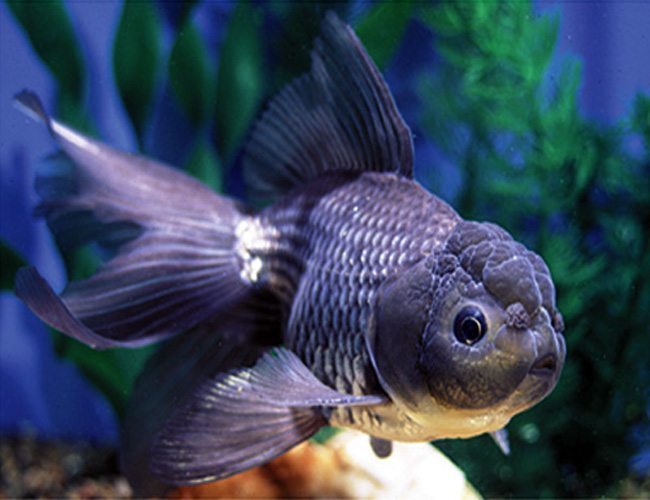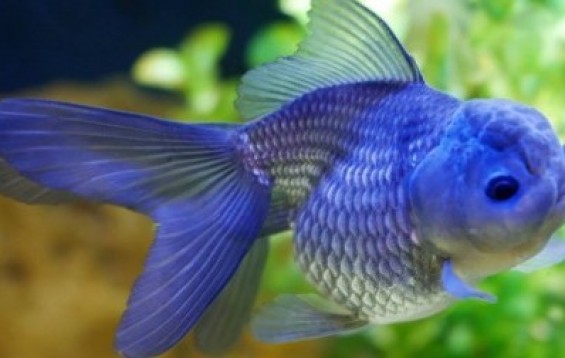Blue Oranda Goldfish
Blue Oranda Goldfish: Everything You Need to Know
If you're looking for an elegant and beautiful fish for your aquarium, a blue oranda goldfish is an excellent choice to consider. With its flowing fins, striking blue color, and quirky head growth known as a wen, the blue oranda certainly stands out. However, keeping these fish healthy and happy can be challenging, and there are several things you should know before adding them to your aquarium.
The first thing to know about blue oranda goldfish is that they require a lot of space. These fish can grow up to six inches in length, and they need a tank that's at least 20 gallons in size to thrive. They're also social creatures that do best in groups of two or more, so plan accordingly if you want multiple blue orandas.
While blue orandas are generally hardy fish, they do have some specific requirements to keep them healthy. For example, they need high-quality water that's kept within a specific temperature range and pH level. They're also sensitive to high levels of ammonia and nitrites, so you'll need to monitor their water quality carefully.
In summary, blue oranda goldfish are stunning fish that make a beautiful addition to any aquarium. However, they do require some effort and attention to keep them healthy and happy. If you're willing to put in the work, these fish can be a fascinating and rewarding pet.
The History of Blue Oranda Goldfish
The blue oranda goldfish is a unique variety of the oranda goldfish, which originated in China. Orandas have been bred for hundreds of years, and they were first developed from a wild species of carp. Blue orandas were first created in the early 20th century by selectively breeding fish that exhibited a rare blue coloration.
Personally, I first became interested in blue orandas after seeing them at a local fish store. I was immediately drawn to their striking blue color and their quirky wens. After some research, I decided to add a pair of blue orandas to my aquarium. It's been a fascinating journey learning to care for these fish and getting to know their unique personalities.
The Pros and Cons of Owning Blue Oranda Goldfish
One of the biggest pros of owning blue oranda goldfish is their beauty. These fish are showstoppers with their flowing fins and striking blue color. They're also quite hardy and can tolerate a range of water conditions if given proper care.
However, there are also some cons to consider. As mentioned earlier, blue orandas can be challenging to care for, and they require a lot of space and attention to keep them healthy. They can also be prone to developing health problems, particularly issues related to their wen growth, which can become infected if not properly maintained. Additionally, blue orandas can be quite messy, producing a lot of waste that can quickly impact water quality if not properly filtered.
The Care and Feeding of Blue Oranda Goldfish
If you decide to add a blue oranda goldfish to your aquarium, there are some specific things you'll need to do to keep them healthy and happy. The first thing to consider is their diet. Blue orandas are omnivores and will eat a variety of foods, including pellets, flakes, and live or frozen foods like brine shrimp or bloodworms.
You'll also need to carefully monitor your blue oranda's water conditions. As mentioned earlier, they need high-quality water that's kept within a specific temperature range and pH level. You'll also need to perform regular water changes and keep the tank clean to prevent waste buildup.
How to Choose a Blue Oranda Goldfish
If you're considering adding a blue oranda goldfish to your aquarium, there are a few things to look for when selecting a fish. The first thing to consider is the fish's overall health, look for bright, clear eyes, and scales that are smooth and shiny. Additionally, you'll want to choose a fish with a good body shape; avoid fish with deformities or irregularities in their wen growth.
Question and Answer
Q: How big do blue oranda goldfish get?
A: Blue oranda goldfish can grow up to six inches in length.
Q: Are blue oranda goldfish hard to care for?
A: Blue oranda goldfish require a lot of space and attention to keep them healthy, but they can be rewarding to care for with proper care.
Q: What do blue oranda goldfish eat?
A: Blue oranda goldfish are omnivores and will eat a variety of foods, including pellets, flakes, and live or frozen foods like brine shrimp or bloodworms.
Q: Can blue oranda goldfish live with other fish?
A: Yes, blue oranda goldfish are social creatures and do best in groups of two or more. However, they should only be housed with other goldfish or similar species to prevent aggression.
Conclusion
Adding a blue oranda goldfish to your aquarium can be a wonderful way to add elegance and beauty to your tank. Although they can be challenging to care for, these fish can be rewarding with proper attention and care. So if you're up for the challenge and willing to put in the effort, consider adding a blue oranda goldfish to your collection today!
Gallery
Blue Oranda | Goldfish, Beautiful Fish, Drawn Fish

Photo Credit by: bing.com / goldfish blue oranda fish drawn beautiful
Oranda Blue Or Oranda Goldfish | Arizona Aquatic Gardens

Photo Credit by: bing.com / oranda goldfish blue fancy fish auratus carassius freshwater
Blue Oranda Goldfish - Goldfish - Carassius Auratus | Tank Facts

Photo Credit by: bing.com / goldfish oranda auratus carassius
Blue Oranda ~ All About Us In My Blog

Photo Credit by: bing.com / goldfish oranda fantail warna orandas logan primadona tembaga berkilauan mengingatkan maskoki logam memang hobiis
Blue Oranda Goldfish For Sale From Windsor Fish Hatchery | Goldfish For

Photo Credit by: bing.com / goldfish blue oranda fish hatchery windsor